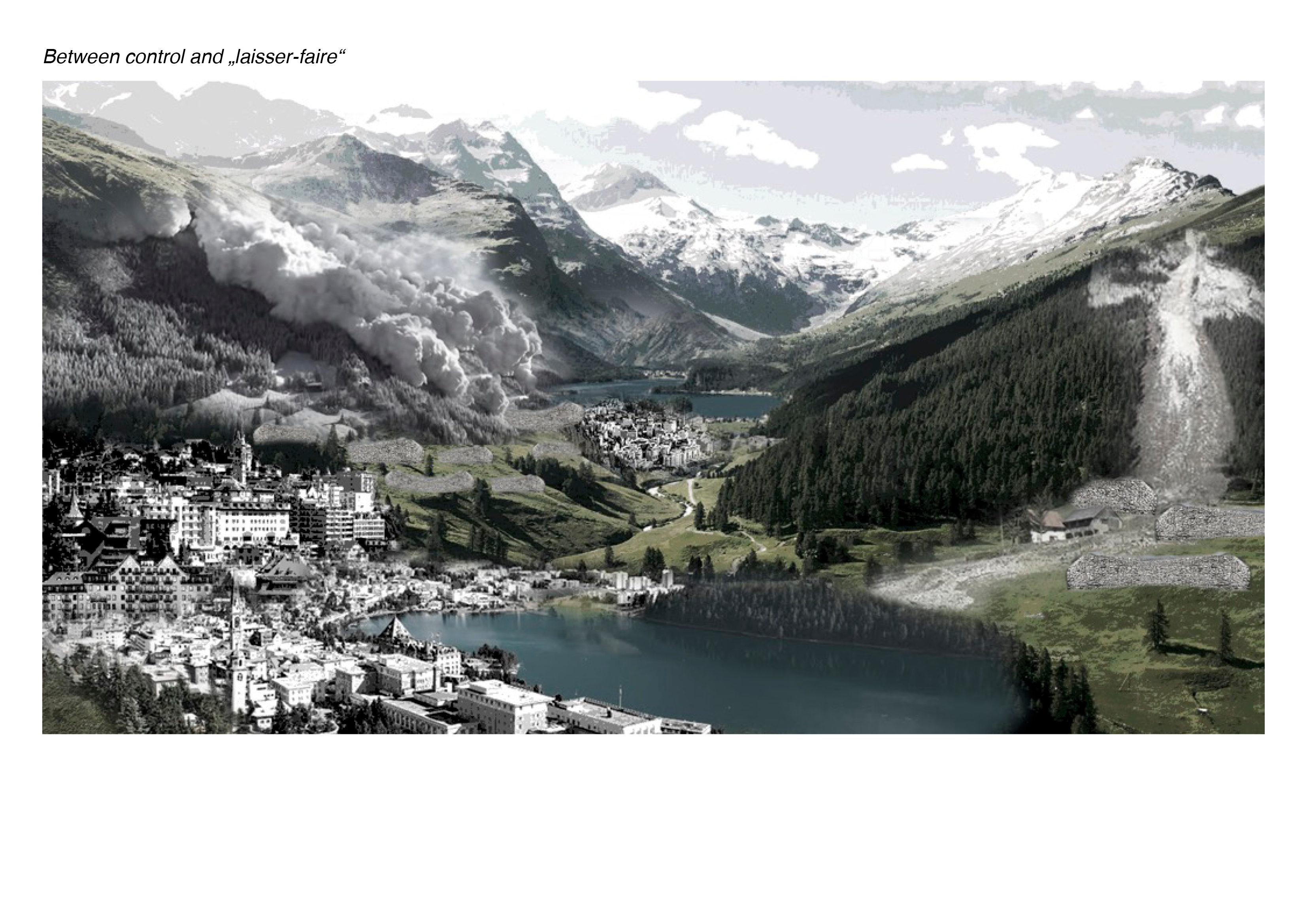
Cumin Protectzium
cinétique, climate-change adaptation to natural hazards
ETH Zurich
" Between control and `laisser-faire` "
It has already been proven that in Graubünden, as well as in other alpine regions in Switzerland, there will be, in the future, increased threats to inhabitants and villages from natural forces such as avalanches, debris flows and rockfalls. The permafrost is increasingly thawing due to rising temperatures, unleashing unpredictable and incalculable energies and forces. Taking a closer look at the Engadin valley, numerous protective structures with a significant impact on the landscape can be observed. The current response to such natural events primarily involves purely monofunctional, technical engineering structures. While protective structures are necessary, the question that arises is how can they be designed in a non-monofuntional manner. How can we design along with the danger rather than against it? "Cumin Proteczium" responds to natural hazards in a site-specific way, taking into consideration both the natural and built environment and offering added value to both. Protective structures, constructed with local, natural materials and with minimal impact on the landscape, can be inhabited and utilized by people. Through thoughtful placement and arrangement, these structures can generate a diverse range of landscape forms. Samedan was selected as the location for this pilot project due to its strategic position in the valley, in terms of public transportation and its advantageous sunny slope.
